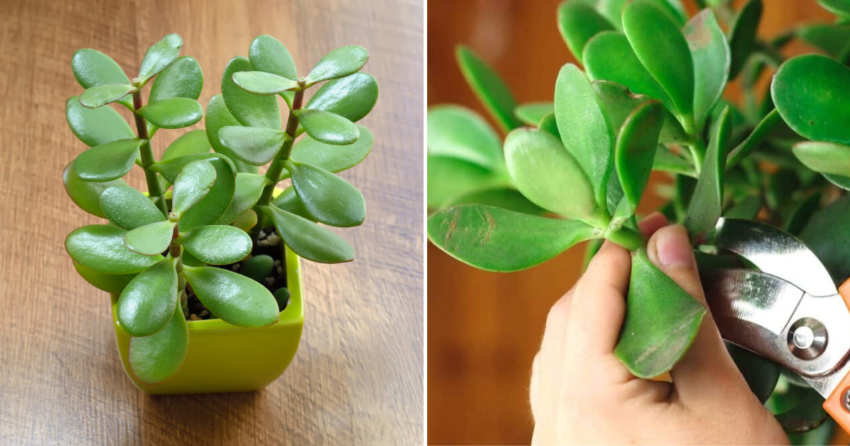Jade plants (Crassula ovata) are popular succulents known for their thick, fleshy leaves and attractive tree-like appearance. With their ability to thrive in a variety of conditions, these low-maintenance plants have become a favorite among indoor gardeners. Pruning plays a vital role in maintaining the health and aesthetics of jade plants, and when done correctly, it can encourage robust growth and result in a big, bushy plant. In this article, we will guide you through the step-by-step process of pruning your jade plant to help it achieve a lush, full-bodied form.
-
Understand the Pruning Basics
Before you begin pruning your jade plant, it’s important to understand the basic principles of pruning. Pruning is the selective removal of certain parts of a plant to encourage new growth, improve structure, and promote overall health. With jade plants, the goal is to create a compact, bushy appearance by stimulating branching and preventing legginess.
-
Choose the Right Tools
Having the proper tools is essential for successful jade plant pruning. Make sure you have the following tools on hand:
- Pruning shears: Use sharp, clean pruning shears to make precise cuts without causing damage to the plant.
- Rubbing alcohol: Sterilize your pruning shears by wiping them with rubbing alcohol to prevent the spread of diseases between cuts.
-
Determine Pruning Timing
Jade plants can be pruned at any time of the year, but it’s best to do so during the active growing season, typically in spring or early summer. Pruning during this period allows the plant to recover quickly and encourages vigorous growth.
-
Identify Areas for Pruning
To achieve a big, bushy plant, focus on pruning specific areas of your jade plant:
- Leggy or elongated branches: Identify long, stretched-out branches that detract from the plant’s overall form. These branches can be pruned back to encourage branching and compact growth.
- Crossing or rubbing branches: Look for branches that cross or rub against each other. These branches can be removed to prevent damage and improve airflow.
- Dead or diseased branches: Identify any dead or diseased branches and promptly remove them to maintain plant health.
-
Pruning Techniques
When pruning your jade plant, follow these techniques:
- Pinch pruning: For smaller growth control, use your fingers or sharp pruning shears to pinch off the tips of leggy branches. This encourages branching and results in a fuller plant.
- Hard pruning: If your jade plant has become overly leggy or lopsided, consider a more drastic approach. Cut back the branches by one-third to one-half their length, just above a leaf node or branching point. This severe pruning stimulates new growth from the remaining stems, resulting in a bushier appearance.
-
Aftercare and Maintenance
After pruning your jade plant, it’s important to provide proper aftercare to ensure healthy regrowth:
- Watering: Adjust your watering routine to avoid overwatering immediately after pruning. Allow the soil to dry slightly before watering again.
- Lighting: Place your jade plant in a bright location with indirect sunlight. Sufficient light is crucial for new growth and preventing legginess.
- Fertilizing: After pruning, wait for a few weeks before applying a balanced houseplant fertilizer. This gives the plant time to recover before receiving nutrients.
Conclusion
Pruning your jade plant is an effective way to shape and maintain a big, bushy appearance. By understanding the basics, using the right tools, identifying areas for pruning, and applying proper techniques, you can successfully encourage new growth and transform your jade plant into a lush, thriving centerpiece. Remember to provide adequate aftercare to support healthy regrowth and enjoy the beautiful results of your pruning efforts.

